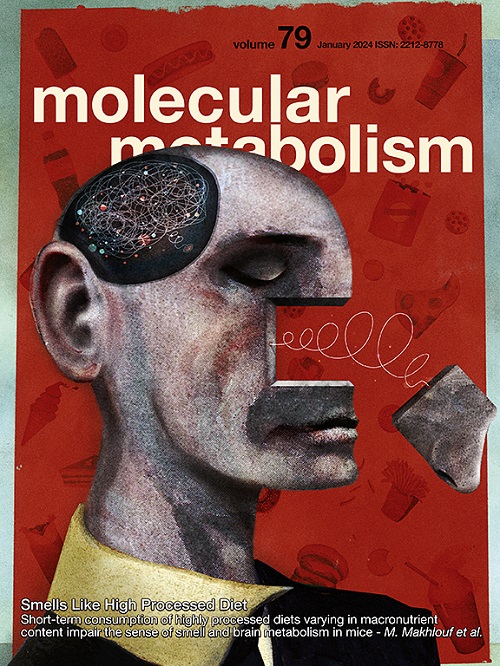Semaglutide and bariatric surgery induce distinct changes in the composition of mouse white adipose tissue
IF 7
2区 医学
Q1 ENDOCRINOLOGY & METABOLISM
引用次数: 0
Abstract
Adipose tissue is a central player in energy balance and glucose homeostasis, expanding in the face of caloric overload in order to store energy safely. If caloric overload continues unabated, however, adipose tissue becomes dysfunctional, leading to systemic metabolic compromise in the form of insulin resistance and type 2 diabetes. Changes in adipose tissue during the development of metabolic disease are varied and complex, made all the more so by the heterogeneity of cell types within the tissue. Here we present detailed comparisons of atlases of murine WAT in the setting of diet-induced obesity, as well as after weight loss induced by either vertical sleeve gastrectomy (VSG) or treatment with the GLP-1 receptor agonist semaglutide. We focus on identifying populations of cells that return to a lean-like phenotype versus those that persist from the obese state, and examine pathways regulated in these cell types across conditions. These data provide a resource for the study of the cell type changes in WAT during weight loss, and paint a clearer picture of the differences between adipose tissue from lean animals that have never been obese, versus those that have.
塞马鲁肽和减肥手术会引起小鼠白色脂肪组织成分的明显变化。
脂肪组织在能量平衡和葡萄糖稳态中起着核心作用,面对热量过载时,脂肪组织会扩张,以安全储存能量。然而,如果热量过载持续不减,脂肪组织功能失调,导致胰岛素抵抗和2型糖尿病形式的全身代谢妥协。在代谢性疾病的发展过程中,脂肪组织的变化是多样而复杂的,组织内细胞类型的异质性使其更加复杂。在这里,我们详细比较了饮食诱导肥胖的小鼠WAT图谱,以及通过垂直袖胃切除术(VSG)或用GLP-1受体激动剂semaglutide治疗引起的体重减轻后的小鼠WAT图谱。我们专注于识别回归到瘦样表型的细胞群与那些从肥胖状态持续存在的细胞群,并检查这些细胞类型在不同条件下的调控途径。这些数据为研究减肥过程中WAT细胞类型的变化提供了资源,并更清晰地描绘了从未肥胖的瘦动物与肥胖动物脂肪组织之间的差异。
本文章由计算机程序翻译,如有差异,请以英文原文为准。
求助全文
约1分钟内获得全文
求助全文
来源期刊

Molecular Metabolism
ENDOCRINOLOGY & METABOLISM-
CiteScore
14.50
自引率
2.50%
发文量
219
审稿时长
43 days
期刊介绍:
Molecular Metabolism is a leading journal dedicated to sharing groundbreaking discoveries in the field of energy homeostasis and the underlying factors of metabolic disorders. These disorders include obesity, diabetes, cardiovascular disease, and cancer. Our journal focuses on publishing research driven by hypotheses and conducted to the highest standards, aiming to provide a mechanistic understanding of energy homeostasis-related behavior, physiology, and dysfunction.
We promote interdisciplinary science, covering a broad range of approaches from molecules to humans throughout the lifespan. Our goal is to contribute to transformative research in metabolism, which has the potential to revolutionize the field. By enabling progress in the prognosis, prevention, and ultimately the cure of metabolic disorders and their long-term complications, our journal seeks to better the future of health and well-being.
 求助内容:
求助内容: 应助结果提醒方式:
应助结果提醒方式:


